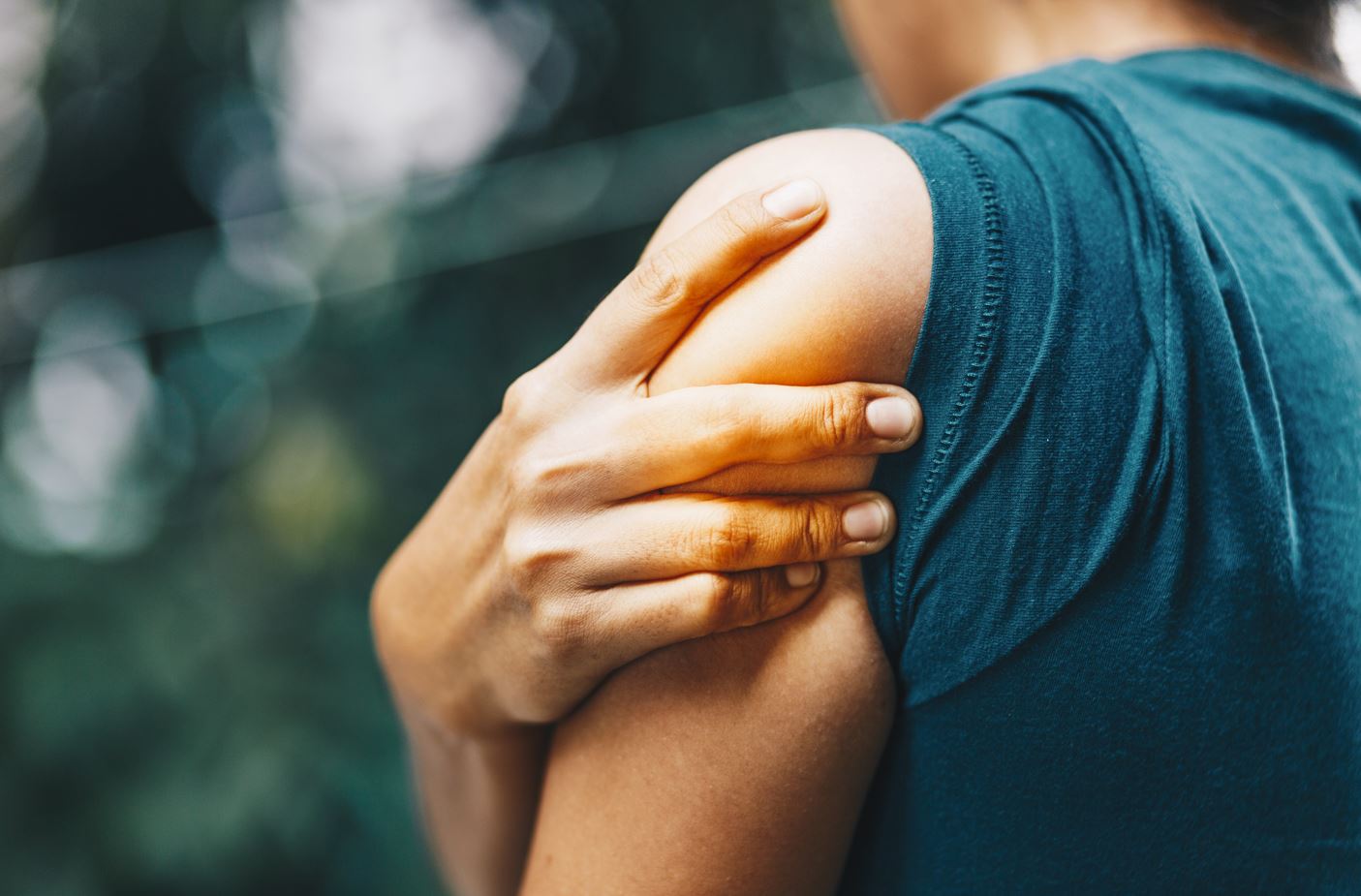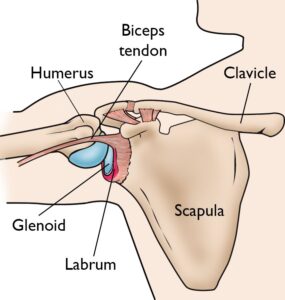

Image provided by OrthoInfo AAOS
A SLAP tear is an injury to the labrum of the shoulder which can be caused by either acute trauma or by repetitive shoulder motion. This injury is to the ring of cartilage which surrounds the socket of the shoulder joint. In a Superior Labrum Anterior and Posterior or SLAP injury, the upper part of the labrum has become injured. In some cases, the biceps tendon can become part of this injury as well.
Causes of SLAP tears
SLAP tears are seen as a result of motor vehicle accident, a fall onto an outstretched arm and in conjunction with a shoulder dislocation. Athletes and weightlifters who repeatedly participate in overhead motion sports can experience labrum tears, too. In patients over 30 to 40 years of age, tearing or fraying of the superior labrum can be seen as a normal process of aging and is quite different from acute injury a younger person might experience.
A sensation of locking, popping, catching, or grinding is a common symptom of this condition as it pain with movement of the shoulder and when lifting objects, particularly overhead. It is accompanied by a decrease in shoulder strength and a sensation that the shoulder is going to pop out of joint.
Treatment options for SLAP tears
In most cases, the initial treatment for a SLAP injury is nonsurgical and involve nonsteroidal anti-inflammatory medication. Physical therapy is also very helpful for this condition. Exercises geared toward this injury will help to restore movement and strengthen the shoulder. Flexibility and range-of-motion exercises are prescribed to help stretch the shoulder capsule (the strong connective tissue surrounding the joint). Exercises to strengthen the shoulder support muscles can relieve pain and prevent further injury. Physical therapy generally lasts from 3 to 6 months.
If the pain does not improve with nonsurgical methods, then surgery may be the best option.
Arthroscopy
Arthroscopy is the surgical technique most commonly used for treating a SLAP injury. During arthroscopic surgery the surgeon will be able to determine the best treatment for each case. Sometimes it requires removing the torn part of the labrum or reattaching the torn part using sutures. And in some cases, sutures are not required, instead, the biceps tendon attachment is released to relieve painful symptoms.
SLAP Tear Recovery
Most patients have good results with shoulder arthroscopy but as with all surgeries, there are some risks – mostly minor and treatable. Typical risks include; infection, excessive bleeding, blood clots, shoulder stiffness, and damage to blood vessels or nerves. The majority of patients report improved shoulder strength and less pain after surgery for a SLAP tear.
Article source: AAOS OrthoInfo
SRO Shoulder and Elbow Care Center
As one of the top programs in the North Bay for shoulder care Santa Rosa Orthopaedic’s Shoulder and Elbow programs provides highly specialized care to those experiencing arm pain. Our patients benefit from the expertise and skill of specialists who perform countless procedures each year while continually pioneering advances in repair and replacement. Learn more …

